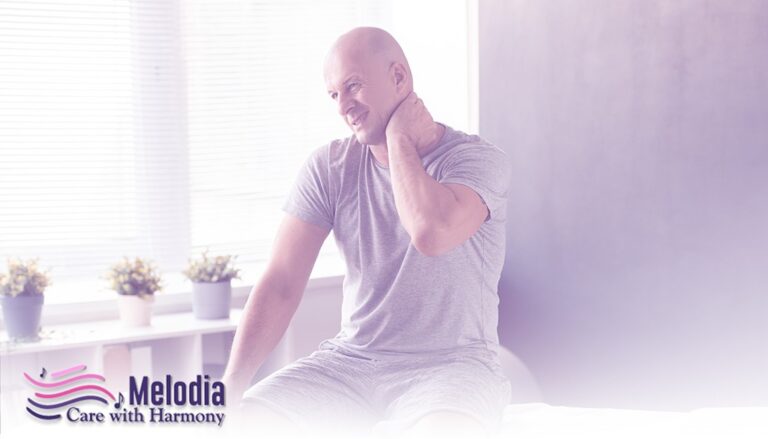Hospice Physical Therapy In Antioch City, California
A common misconception about hospice care is that “moving to hospice care” automatically entails everyone ceasing to provide any form of medical care; however, this is not the case at all.
While the type of coverage may change as a person transition away from traditional medical care, this does not imply that anyone will be left alone to wither away on their own.
The staff at Melodia Care Hospice will tell you that patients can benefit from a wide range of services that are designed to help them both physically and psychologically during their illness. Moreover, clients can benefit from the services of social workers who can assist them with financial or related paperwork that may arise at this time of life, such as estate planning or funeral arrangements.
Melodia Care can also bring in additional experts and skilled therapists who can all offer ways to help patients feel relaxed during this difficult time, as well as ways to help them feel slightly less anxious about what lies ahead.
A large part of the philosophy of palliative care is centered on assisting patients in improving their quality of life rather than subjecting them to an array of potentially risky and dangerous treatment methods or uncomfortable procedures to alleviate their suffering.
In contrast to traditional medicine, which often seeks to ‘cure’ the illness that people are suffering from in a hospital setting, hospice care allows people to spend their final days at home with their loved ones. They may have a close working relationship with a provider.
However, even if their doctor or provider does not wish to provide direct care in the future, he or she will likely be interested in the rest of their journey. Hospice programs may also include the services of a physician, as well as a variety of nurses with varying levels of training and experience. Depending on the patient’s requirements, some caregivers may come in on a regular basis, while others may be full-time or part-time employees.
While hospice care is geared toward improving the quality of life for patients whose disease or illness is unlikely to be cured, there is no reason why hospice patients should be subjected to pain and discomfort. Therapies that address the physical, emotional, and spiritual aspects of one’s being can help one spend their remaining time as comfortably and contentedly as they possibly can.
Even though physical touch is easily overlooked when treating a serious medical problem, it has a significant impact on the patient’s overall well-being. When it comes to hospice patients, massage therapy offers a type of healing, relief, and relaxation that medical treatments simply cannot match.
It Helps Relieve Stress on the Body

Although entering hospice may coincide with the end of a patient’s medical care, the patient may still live for several months after entering hospice. It is common for medical therapies designed to treat disease or relieve pain to have an adverse effect on the body, and physical therapy is a gentle, effective way to address and reduce some of that stress. According to research, hospice physical therapy can provide a degree of comfort and relaxation that can help to alleviate pain, anxiety, stress, and depression in those who are dying.
Physical Touch Eases Discomfort

Many hospice patients are already in a fragile and vulnerable state, making traditional physical therapy unnecessary. The most compassionate thing a caregiver can provide at this point is something as simple as gentle touch, such as a foot massage or massaging the scalp. It provides the patient with the opportunity to relax in whatever way they find most beneficial for themselves.
It Provides Physical Benefits

Physical therapy for hospice patients can provide more than just a sense of compassion; it can also aid in the medical stabilization of the patient. Reduced high blood pressure, stabilization of the heart rate, and stimulation of the release of endorphins are all benefits of this type of therapy. It also gives the patient the impression that they are being looked after, which helps to alleviate fears, depression, and anxiety.
Massage Therapists Can Be an Advocate for the Patient

Physical therapists have a very personal relationship with their patients. It is possible for the therapist to gain an understanding of the patient’s emotional state as well as his or her physical state of wellness even if no words are exchanged. Therapists are trained to understand the human body, and they can serve as a patient’s advocate when dealing with physicians and family members, among other things.
It Creates a Soothing Presence

Loneliness, fear and depression are likely to set in when a patient is nearing the end of his or her life. Massage therapists provide a type of undivided attention that is solely focused on the patient and their specific needs at the time of the treatment. Hospice massage, if nothing else, provides a soothing and comforting presence for the patient during their final days.
Massage Therapy Improves Circulation

Many hospice patients have limited mobility or are completely bedridden when they enter the facility. Physical therapy helps to relax the muscles and soft tissues while also loosening the muscles and tendons, which helps to increase blood flow. Better circulation has a direct impact on pain management and can have additional benefits such as promoting sleep and promoting reduced fatigue.
Patients Can Improve Their Mobility

Physical therapy has been shown to reduce pain and stiffness in the joints, which may allow some hospice patients to move around more freely after their treatment. It is possible to tailor therapy to each individual patient and his or her needs, while also modifying it to accommodate any ongoing treatments or therapies.
It Relieves Insomnia And Other Sleep Problems

Sleep is critical for a patient’s health and well-being, but many patients who are suffering from a terminal illness suffer from insomnia or other sleep disorders. Living in a hospice setting can result in an irregular sleep schedule, and a reduction in daytime activity can exacerbate sleep problems in the evening. It has been shown that physical therapy can promote relaxation and loosen muscles, resulting in more restful sleep-in elderly patients and patients with chronic diseases.
Massage Therapy Can Relieve Anxiety And Depression

Patients who are nearing the end of their lives experience a significant amount of psychological distress, which can result in anxiety and depression. When it comes to treating depression in end-of-life patients, one of the most significant roadblocks is the belief that depression is a universal experience among these patients. Hospice relaxation relieves stress and promotes emotional balance in patients suffering from anxiety and depression, as well as in other types of patients.
It Promotes a Sense of Peace and Comfort

Hospice patients face a frightening and uncertain time as they near the end of their lives. Massage therapy for hospice patients induces a relaxation response in the body, which causes the release of serotonin in the brain, which helps to alleviate their symptoms. Thoughts and emotions are influenced by this chemical, which results in a sense of well-being and a greater ability to cope with the uncertainty that lies ahead.
Therapy needs

Patients, whether they are receiving home care or hospice care, are especially appreciative of visits from skilled therapists.
However, they may appreciate the relief that comes from assisting their muscles or from developing skills and muscles in any case.
A good example is physical therapy, which is intended to relieve muscle cramping and soreness. In addition to these advantages, it provides relaxation and better sleep – something that is not always easy to come by in today’s world.
The physical therapist, for example, may be a regular visitor and it provides an opportunity to make new connections with him or her.
The Same Is True For Physical Therapy

A therapist will come in on a regular basis to work with a patient to help them improve or regain their strength and fundamental abilities. Besides improving their mobility and lowering their risk of injury, it can also help them to feel better by reducing pain.
Physical therapists have received specialized training in how muscles and bones work together and what needs to be improved in order to help people who have lost some of their abilities due to an injury, illness, or medical condition such as a stroke regain those abilities.
Even though physical therapy can be beneficial for people of all ages, it is particularly in demand among seniors, who may be dealing with a variety of injuries and medical conditions that may have worsened over the years.
What it isn’t
It is important to note that physical therapy is distinct from occupational therapy, which is a service that hospice patients may also be considering. Learning or re-learning specific skills to safely perform specific tasks is the focus of this type of therapy, which can include everything from getting out of bed in the morning to getting dressed and grooming to safely preparing and cooking meals in the kitchen.
Occupational therapy can assist a patient in acquiring certain skills that will allow them to continue living independently, which is something that many seniors value highly.
Physical therapy, on the other hand, can be particularly beneficial for patients receiving hospice care.
They may have been placed on hospice as a result of a specific health condition or a combination of health conditions that have caused them to lose or significantly reduce some of their physical abilities. They may be in pain or have mobility issues that make it difficult for them to exercise on a consistent basis.
Despite the fact that a doctor may prescribe pain medication to alleviate general discomfort, it may still be difficult to move around.
In collaboration with the patient, a physical therapist will devise strategies for strengthening muscles and improving overall coordination. Additionally, in addition to providing a variety of exercises during each scheduled session, an occupational therapist may assign “homework,” such as additional exercises, for the patient to continue to work on during the days when there aren’t any scheduled sessions.
In an interesting twist, as people become more aware of the benefits of palliative care, at least from their perspective as patients, one trend is to provide more physical therapy services. Physical therapy helps patients in their final days, and their improved abilities also improve their safety and provide a welcome boost to their overall life satisfaction.
In addition to physical therapists and physical therapist assistants, Melodia Care is pleased to offer the services of occupational therapists who are happy to put together customized programs for patients depending on their specific health needs.
At Melodia Care Hospice, we strive to provide our patients with comprehensive care that alleviates more than just the physical discomforts of death and dying. In addition to physical therapy for hospice patients, we offer a variety of other services to help you or your loved one remain comfortable as they approach the end of their lives.
You can reach us at any time of day or night by contacting us through our 24/7 online customer support chat or by calling 1-888 635-6347 (MELODI-7).
